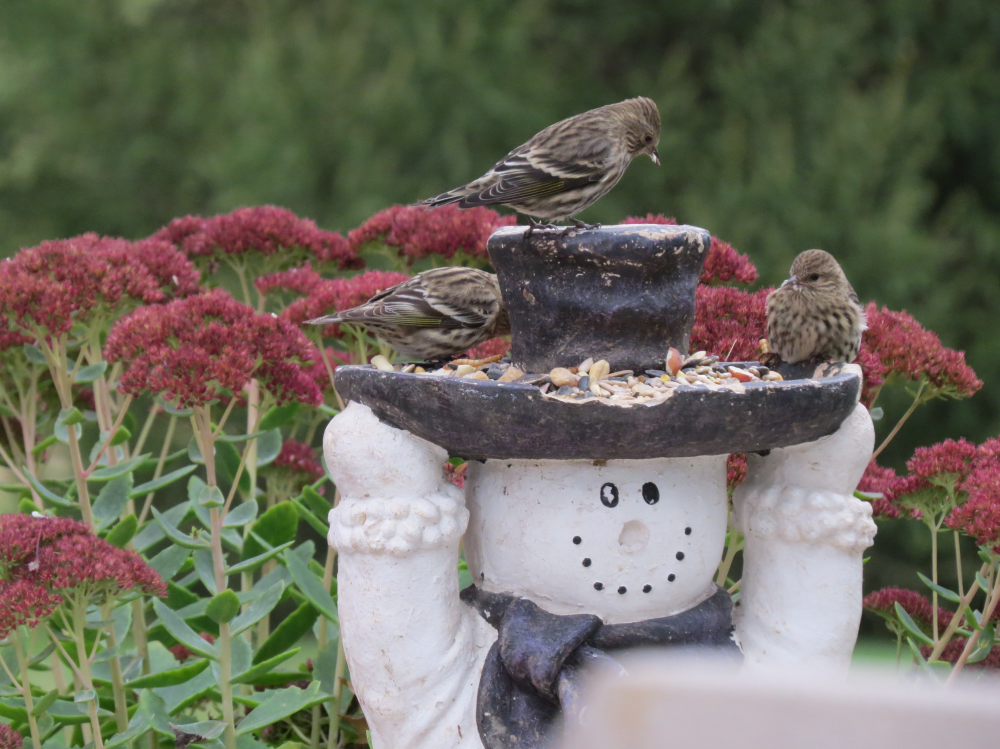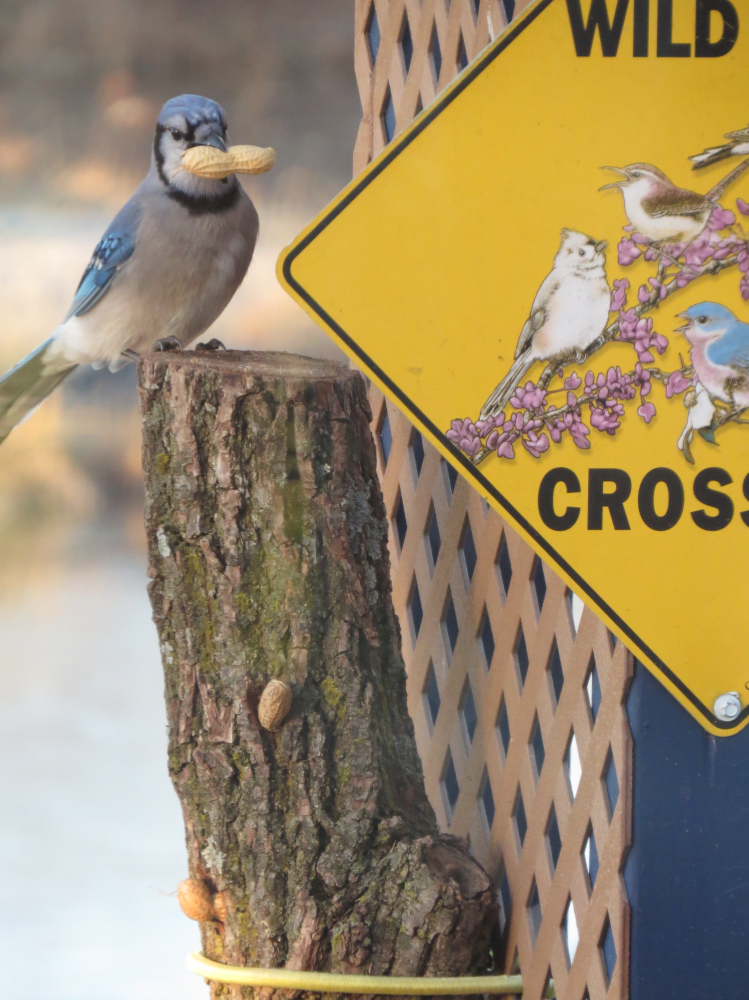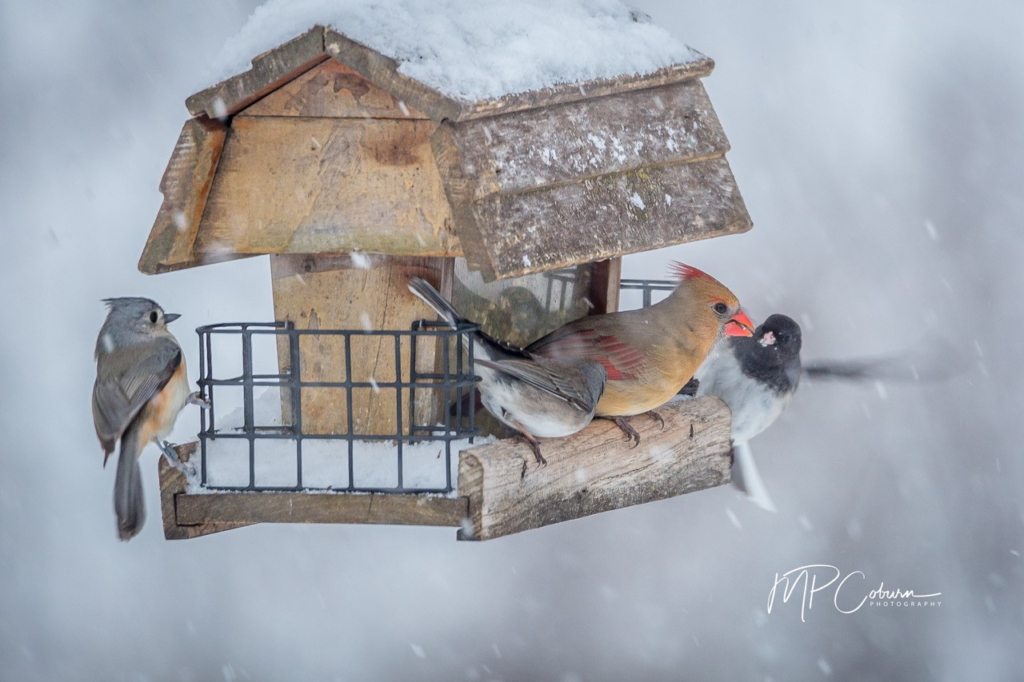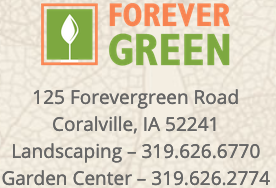
Eastern Iowa Bird Feeding Calendar by Month
Feeding birds during the winter may reduce mortality. Feeding year round allows us the opportunity to observe birds up close. But it is critical to keep feeders clean to prevent the spread of disease. Mark windows to prevent birds from flying into glass panes.
January
Keep heated water available.
Put out grit when ground is covered with ice or snow.
Open feeder ports after snow or ice storms.
Suet in demand all winter.
February
Woodpeckers will use more suet.
Feeder birds fickle in warm spells.
Clean or repair bird houses for spring.
Put out some grit after deep snows.
Bluebirds start to show up at end of month.
March
Natural food scarce at end of winter.
Suet in demand all winter
Put out Bluebird boxes; keep available for Bluebirds.
Protect Bluebird boxes from Sparrows, Raccoons, and S.nakes.
Clean out, put up bird houses.
Plan spring plantings for wildlife.
April
Change food for summer.
Plant Hummingbird flowers.
Prepare nectar feeders for Hummingbirds, Orioles.
Plant shrubs, trees for year round food.
Use safflower instead of sunflower seed to keep grackles away.
May
Put out oranges, jelly, nectar for Orioles first week in May. Orioles appear by 7th, 10th at latest
Add fruit to platform feeders.
Local birds begin nesting. Put out nesting materials.
Put out crushed eggshells for minerals to help with egg production.
Keep bird bath in shade.
June
Most birds nesting.
Store seed in cool areas.
Moving water attracts birds.
Use millet away from main feeders to keep house sparrows at the millet.
Use dry summer suet mix.
July
Waxwings and Goldfinches finally nest as thistles, milkweed bloom.
Some birds start to moult by end of month.
Singing begins to die down as moulting birds hide in shrubs & weeds.
Young birds coming to feeders.
Keep bird baths clean and the water fresh.
August
Migratory birds in full moult.
Lots of baby birds at feeders.
Ripening berries bring early migrants.
Shake seed bags to break up the hatching cycle of meal moths.
Be ready for mid-month Hummingbirds.
September
Fall warbler migration. “Confusing fall warblers” have moulted to winter plumage.
Rose-breasted Grosbeaks, Thrushes, Flycatchers, Cuckoos head south.
Goldfinches in full moult.
Quiet time for most songbirds.
Meal moths in late summer; shake stored seed to break up egg clusters.
October
Local birds finishing their moult; Cardinals & Blue Jays normal again.
Summer bird migration is over; blackbirds last to go
Check feeders, get ready for winter feeding
Juncos will suddenly appear
Clean hummingbird feeders before storing them
Check and clean bird bath heaters for use in winter
Red-breasted nuthatch may have already arrived (really like peanuts).
November
Anticipate Pine Siskins, Purple Finches, House Finches
More rare are: Evening Grosbeaks, Crossbills, Redpolls
Feed sparrows only in a remote area
Goldfinch are in olive garb until spring
Put suet feeders up
Clean bird bath heater.
Sign up for Annual Audubon Society Christmas Count
December
Get poles into ground before it freezes.
Make brush pile for ground feeders.
Set up birdbath water heater.
Cedar Waxwings like berry trees and a water source.
Scout birding areas in preparation for Annual Bird Count.



